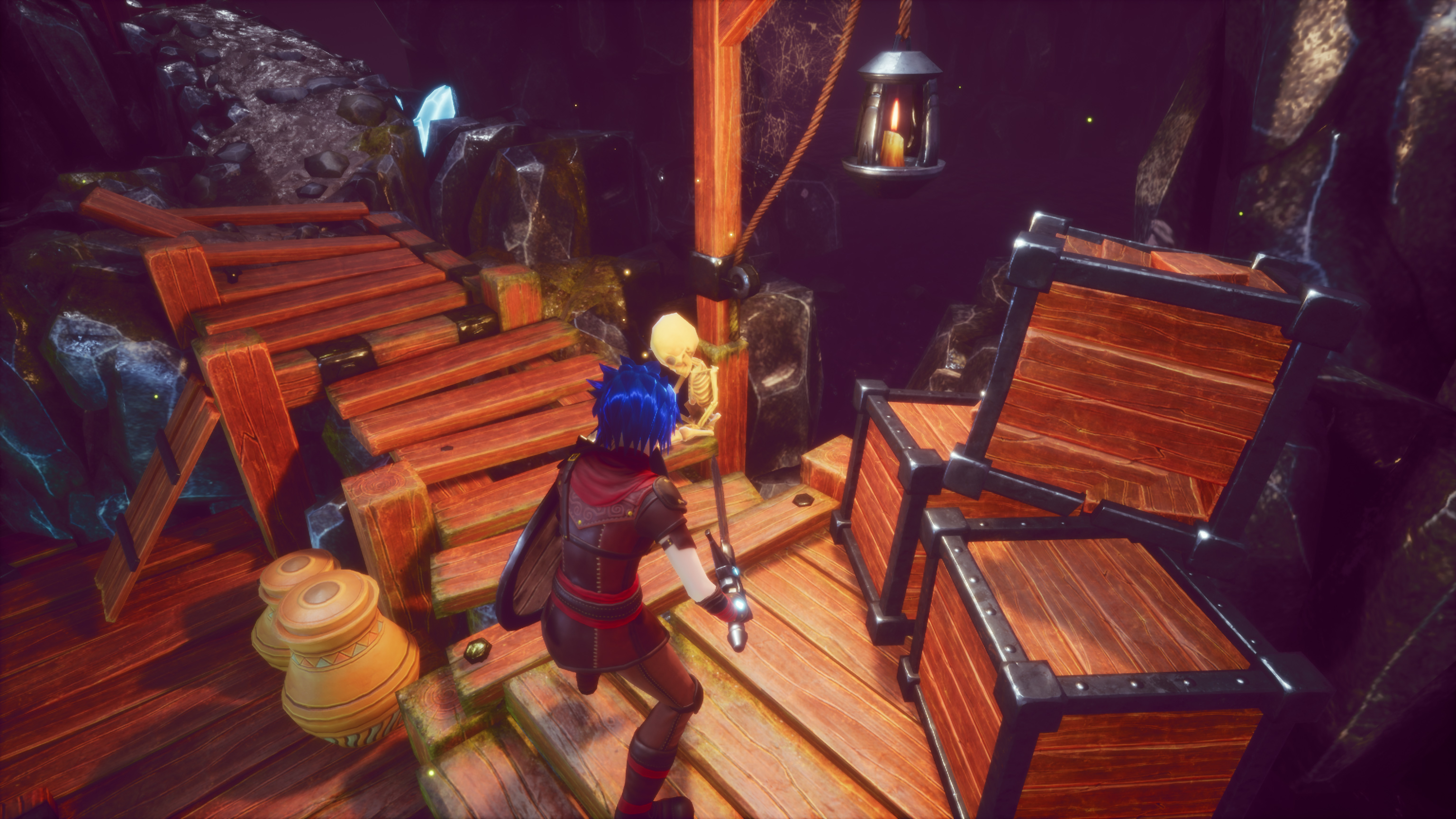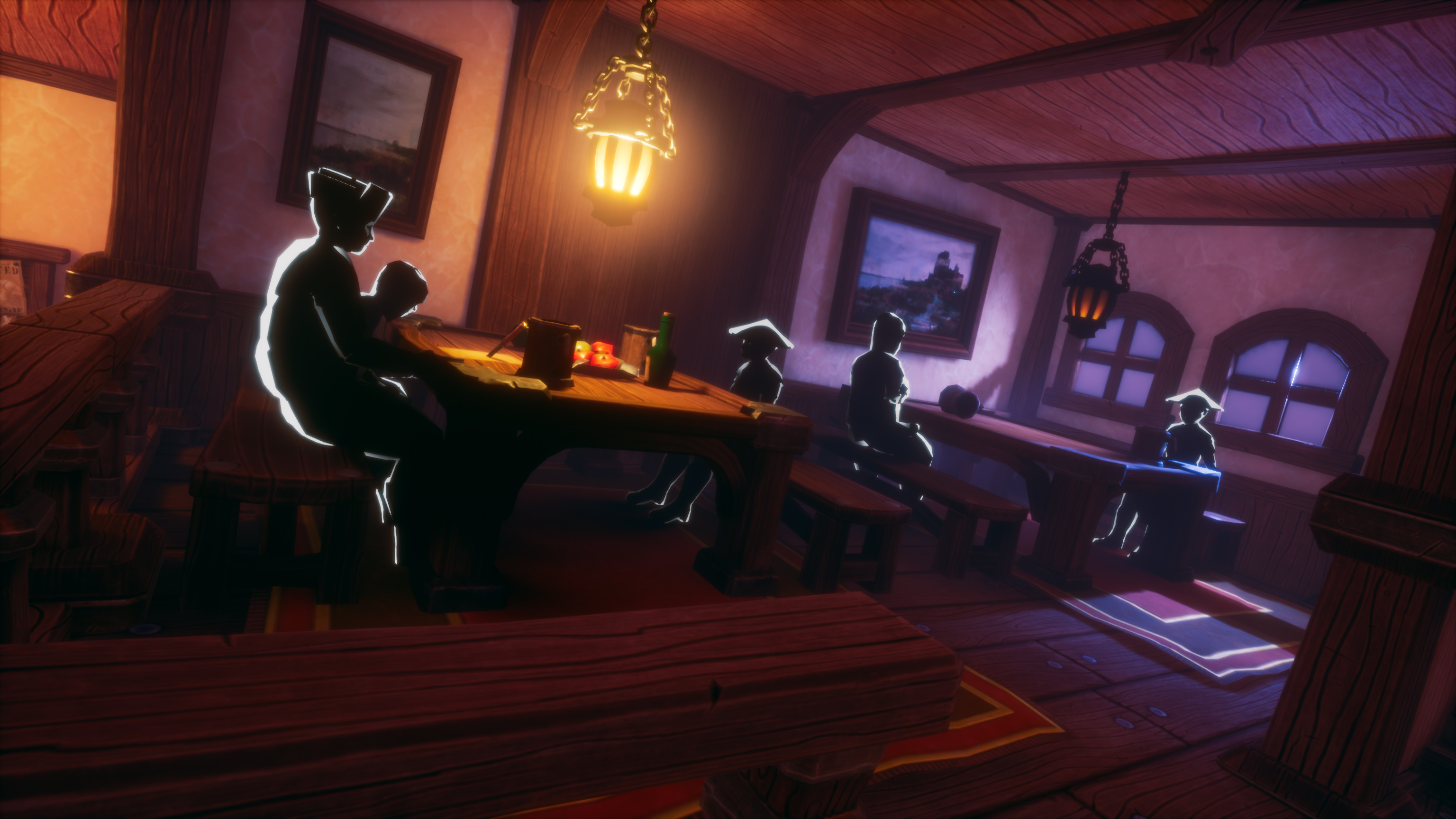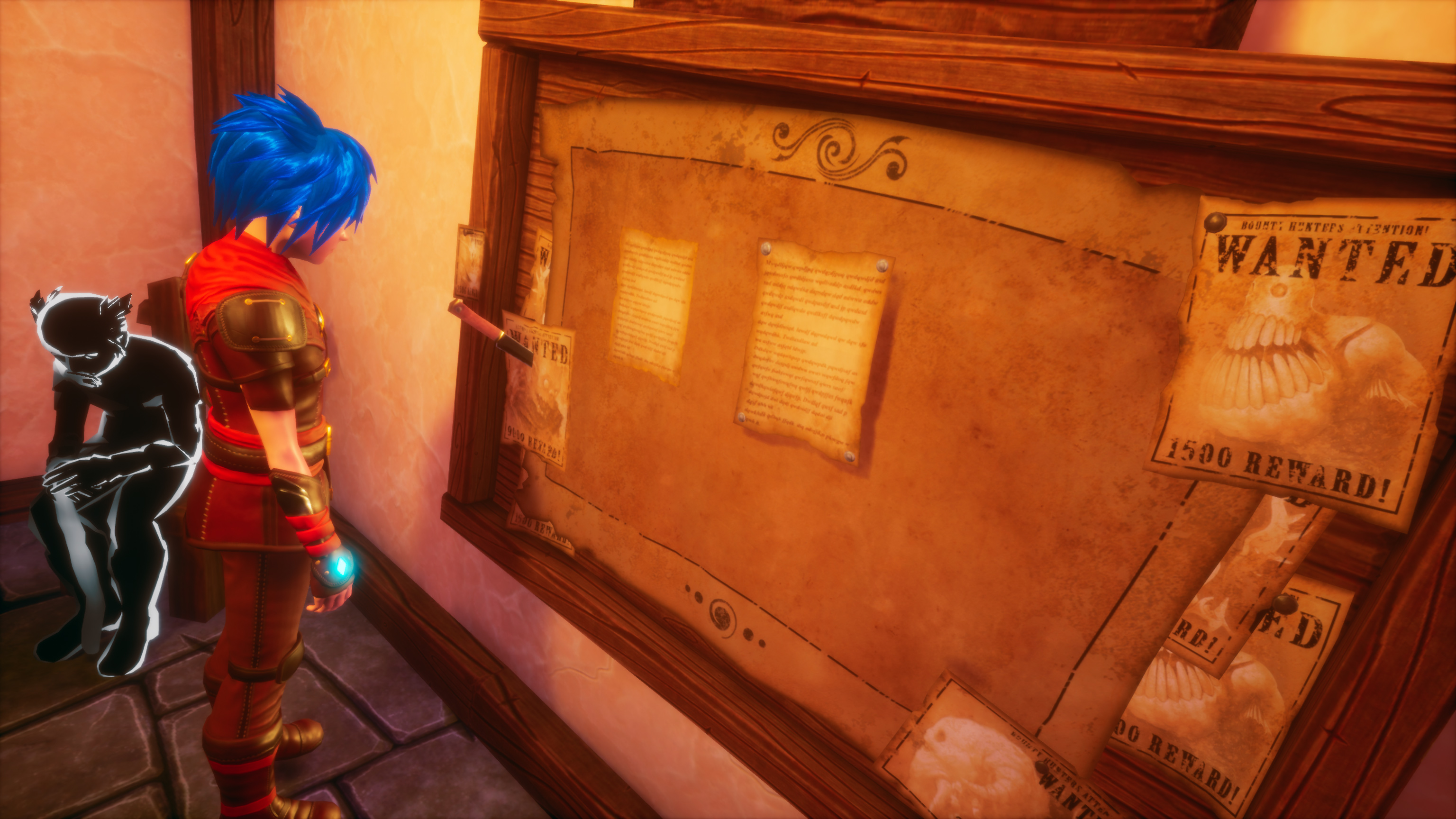Last week, the Yaroslavl team One Dream received a $20,000 grant from Epic Games to support the game Be:Brave. We talked with the team’s lead developer, Mikhail Vaksman, about the history of the project, why they switched from Unity to Unreal and which publisher they are looking for now.
Alexander Semenov, Senior Editor App2Top.ru : How did it happen that a team of developers gathered in Yaroslavl and undertook to make their own Zelda?

Mikhail Vaksman, Lead Developer of One Dream
Mikhail Vaksman, Lead Developer of One Dream: It all started quite a long time ago with me and Alexander Mitin, my good friend and colleague. Together with him, we have been working in the industry for more than 7 years. The two of them worked for about 4 years as freelancers. We had a great desire to file our project for a long time, but we didn’t have the necessary experience and team. We took on everything we could: we didn’t have to choose.
In their free time from orders, they studied various technologies and software. Probably, like many novice developers, they generated ideas in batches, wrote dizdocks on them, tried to implement various mechanics in search of something interesting.
By the way, we wrote the first documents on the basis of the notorious “Ryaba Chicken” (a document from 1C, on the example of which it was revealed how to work on a design document – ed.).
Later, we were joined by a wonderful artist Dmitry Kovalevsky, who shared our views. He, like us, was engaged in freelancing, worked on hidens for BigFish.
It was from this moment that our team began to form. From the very beginning we had one simple dream: “to make games that the whole world will play.”
For this reason, the name One Dream is very important to us, it reflects our common ideology.
Yaroslavl is a small city, so it’s not entirely clear how we managed to assemble such a cool team. Someone quite accidentally heard about us, some were advised by friends of friends, some were taught by us.
But not everyone stayed to work with us, went where the money was, everything happened. A few years of work on the enthusiasm of the remaining very much rallied. There are only people who are firm in their beliefs, who are coping with the tasks set perfectly. Besides, I can call anyone here my friend. We not only work together, but also gather for a common leisure time after hours, play games, discuss new trends, experiment and develop.
Initially Be:Brave was planned as a simple Hack & Slash in order to test its strength, and development began on Unity3d. Now it is our flagship with a huge world and a thoughtful ent of the game on Unreal Engine 4.
How long has the game been in development?
Michael: The current version has been in development for about a year, and for the last six months we have been exclusively redesigning and changing individual game mechanics. This, by the way, was greatly influenced by trips to conferences – White Nights and DevGAMM. We initially planned to solve the problems that were pointed out to us, but feedback from users only reinforced our beliefs.

This is how the main character of the game has changed over the past year
Why did they immediately take on the big and complex?
Michael: The main task of the project is to work out the pipeline for the “big and complex”.
Development techniques are constantly progressing, now there are many wonderful packages that allow you to generate textures and other materials in a matter of minutes.
We wanted to learn how to use these opportunities effectively, to learn how to work in accordance with modern standards. Now I can say that we have achieved certain results.
Plus, developing a project of this magnitude is always a challenge. Periodically, there are tasks that require a non-standard approach, over which you need to think, and there are enough other technical difficulties. We really like it, we are fans of our business.
When to learn and try it, if not now? So far, we are not constrained by deadlines, contracts and other restrictions. In a custom-made project, we would never take such risks, and the industry is constantly developing and it’s hard to say for sure what awaits us in the future.
How was the choice of the engine at the initial stage, why was the final choice made in favor of Unreal Engine?
Michael: In fact, there were many reasons, but the most important one was access to the engine sources. Before that, we worked for 6 years on Unity3d, wrote plugins for it, studied it inside and out.
A year and a half after switching to Unreal Engine, I can say that it was not a mistake. With the necessary knowledge of C++, the already powerful engine gives almost limitless possibilities, you are free to do what you want and how you want, and this is really great.
There are 8 of you now. By indie standards, this is a good, big figure. Is this a full-time project team?
Michael: Not really, only 4 people are working on the project on a permanent basis, and full-time in between third-party orders. The remaining 4 perform a number of tasks as needed. With the grant, I hope this will change.
What is the game’s budget by now?
Michael: The main budget of our game is enthusiasm and time. Nevertheless, there are additional costs, such as a trip to a conference, travel, meals. We are trying to cover all this with freelance income. I will not name specific figures.
Now our main source of income is several clients with whom we have been cooperating for many years. Over the past year, we have learned to save a lot. It happened when it came to the Roltons. This has its own romance.
Are there any freelance projects of the team that you are proud of and that you can mention?
Michael: There were good projects, but, unfortunately, they fall under the White Label, so we cannot disclose details. I will only say that these are games of different genres, both card and browser-based MMOs on Unity3d.
We want to be:Brave has become exactly the kind of project that you can be proud of and we will do our best for this.

You have received $20 thousand from Epic Games. Is there a story behind how you managed to become one of the Unreal Dev Grants fellows?
Michael: Last year we took part in White Nights in St. Petersburg (at the same time the game participated in the Indie Game Cup, where it became one of the winners), we were in search of investments and a publisher. Alexey Savchenko, the evangelist of Epic Games at that time, was also met there, he suggested that we apply for a grant and wait for the search for third-party investments. I would like to note that we respect Alexey very much, so we immediately took up the preparation of materials for the grant with optimism and, as time has shown, it was the right step, for which we are very grateful to him.
By steps, can you somehow reveal what it takes to make everything work out and be noticed in Epic Games?
Michael: The most important thing is to prepare as many materials on the project as possible. Be sure to attach a working version of the game, a gameplay video of about 5 minutes and a small pitch document in English, which may contain additional information on the project or disclose some details not included in the demo of the game.
In our case, to demonstrate the seriousness of our intentions, we additionally attached a selection of concept art and placed it all on Google drive.
Next, fill out the questionnaire, which can be found at: https://www.unrealengine.com/unrealdevgrants
In order for someone from Epic Games to see your project, you can try to participate in #EpicFriday on twitter, and just post as many interesting materials on the game as possible with the tag #UE4, and an appeal to @UnrealEngine.
In our case, perhaps it also helped that the project had a version for mobile platforms. There aren’t a lot of indie mobile games on the engine right now.
If your game is cool and high-quality, then the guys from Epic Games will definitely notice you.
You mentioned that the money will be used to upgrade equipment and travel to conferences. With the equipment, it is clear, and what goal you set for yourself at conferences. Find a publisher?
Michael: Finding a publisher is one of the priority goals, but we are also establishing contacts with the press. We hope that we will be able to attract investments. In general, we are trying to get the maximum benefit from trips. The last year has shown that it is necessary to attend conferences, because it is an exchange of experience and useful acquaintances with representatives of the industry.
By the way, now we have the opportunity to attend foreign conferences.
What is the main requirement for a publisher now?
Michael: We have no experience in marketing, and to bring out a project on which a lot of time and effort has been spent, without it for us so far looks like suicide. Therefore, the main criterion in the search for a publisher is the ability to create a hype.
Last fall, I spent a couple of hours playing. Then it seemed that you were making an anime slasher. How much has the concept changed since that time and what will Be in general Be:Brave?
Michael: The problem with the autumn version was that it was tech-intensive and was unable to show the general idea of the game due to its limitations.
To better understand what Be is:Brave, I think it would be best to start with an introduction.
In the world of the game, twenty years before the game events, a cataclysm occurred in the capital of the glorious kingdom of Lyra, the reasons were not established, as a result, many people died, including the royal family. The board went to the local House of Lords, who served the deceased king. The capital itself was badly destroyed, and the castle was lost, it was filled with various dangerous creatures that appeared out of nowhere. Years passed, a small suburb of the capital was restored, but only because the city was located on trade routes between neighboring kingdoms and was very popular.
So, the player will have to try on the role of a “Seeker”, this is a local analogue of a stalker who hunts for artifacts in the castle and its surroundings. The story of the character begins with the arrival at the tavern “The Last Shelter”, located in the destroyed capital.
The tavern serves as a game hub, here you can get a task, chat with other “seekers”, sell the found artifacts to merchants, as well as get valuable information about the game world and the castle.

We understood that we would not be able to pull an open-world game, especially on mobile, but despite this, we wanted to create a sense of openness of this world, so there is a change of day and night at all locations, including the tavern. Not only the lighting changes from time of day, but also NPCs, monsters, tasks, and in some cases even interactive elements of locations.
After completing the tasks, the player goes to the lower levels of the castle and begins his way up. Different levels represent different natural zones, each of which contains its own characteristics. Here you will find intricate magical catacombs, living gardens, snowy mountains, red-hot forges and much more. Moving further and further, the player connects different floors and locations with each other, forming short transitions, for example, from the third floor to the first, while gaining access to a previously closed area. The network of such transitions by design will resemble a kind of anthill.
Of course, there are various obstacles on the way: traps, puzzles, monsters and floor bosses. Already at this stage, we are trying to implement an individual approach to the battle for each opponent.
The game is story-oriented, so there are small plot forks, several endings, including a hidden one. Replayability is achieved through side quests, some of them require visiting old locations, upon inspection of which the player may be surprised to find that something has changed. This also includes test rooms and magic traps (they confuse the space, confuse the transitions between the rooms into which each floor is conditionally divided).
There is a simple system of social relationships between the player and the NPC.
At the beginning, any NPC who is not personally familiar with your character is shown with a black fill, after you form a closer connection with him – he manifests and becomes colored, and any dialogue and quests begin to affect your relationship with him.

And these are just the main points that allow you to more or less understand what the game will be like. Moreover, many of them have already been implemented, but require further development.
We are currently working on the first episode of the game and hope that soon it will all be possible to evaluate live. We plan to prepare a demo version of the project with a length of several hours. At the moment, we have a demo build for iPad Mini 2, which produces a stable 30 fps. The latter is another small but important victory for us on the development front.
The project had problems with control and camera in the fall. How did you decide and what did you come to in the end?
Michael: The project has changed dramatically. Now the camera has positioning from behind the shoulder, which greatly facilitates the study, during the battle it is slightly removed to cover a larger view. But we could not completely abandon splines, sometimes there are places on the location that you need to pay attention to, something similar is implemented in Uncharted. The management was simply adapted to the updated style of the game.
One of the central selling points of the game at this stage is excellent cut scenes. How does the young team manage to create them?
Michael: We have a lot of experience in animation, which has been successfully applied here.
We take MoCap data as a basis and then process them manually. For physical simulations, we use standard 3D package tools. But it still remains quite a creative process.
Each scene requires an individual approach, whether it is character animation or environment. Most of the problems, of course, are caused by the interaction of one with the other.
The most difficult scene at the moment is the scene with the breaking bridge: it was quite difficult to convey the dynamics and set up a clear physical interaction.
By the way, it was originally planned that such scenes would contain more interactive features, and already many of them contain QTE, where a character can die after each unsuccessful series of clicks.
Now we are working out a new pipeline for facial animation, which is based on the Faceware application. Hopefully, this will help breathe more life into the scenes and help us empathize with our characters better.
What was and remains the most difficult thing to develop?
Michael: The most difficult thing for us is level design. At the moment there is no individual for this. This negatively affects the development time. Now we are building levels with the whole team. Some things turn out well, some require improvements, but we often have fresh ideas that fit in well.
Sergey Gimelreich helped us in this field by throwing in some useful materials, for which special thanks to him.
Ideally, a person with relevant experience is needed here, I hope that the situation will improve in the near future, replenishment is planned in the team.
At what stage is the development now?
Michael: We have completed the development of most of the game mechanics that we planned, now we are testing their interaction, correcting critical errors and fully planning work on the first episode. In June, we will move into the phase when we will only have to develop content, build locations and write dialogues.

Why mobile? It just seemed to me that you have such a classic console product.
Michael: We initially chose mobile because we have a lot of experience working with it. Plus, the visual range would distinguish us on this platform, and on PC and consoles we were afraid to be unnoticed.
Now the situation has changed somewhat. We are interested in Nintendo Switch, PS4 and PC, we even have all the necessary content in High Resolution, but this issue will most likely be resolved directly with the publisher.
When is the release?
Michael: So far, we have only a grant on financing, but it is not eternal, so we are deciding on the possibility of entering Kickstarter, which may shift our plans by 2-3 months. Plus, you still need to find a publisher. If there are no problems, then we plan to release the first episode in the first quarter of 2018.
